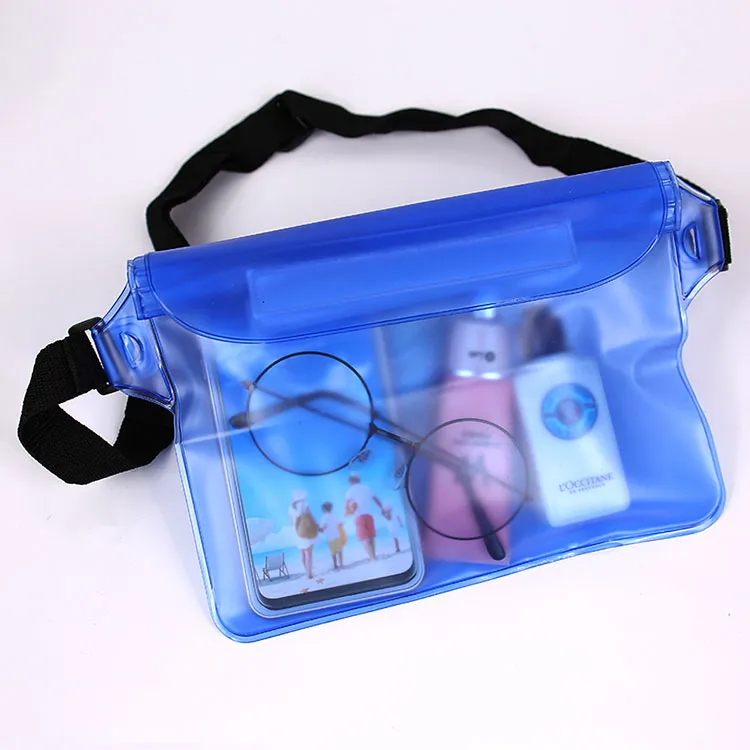What Materials Are Used in Waterproof Bags?
2024-11-13
Waterproof bags are made from a range of materials designed to keep contents dry and protected from water, dirt, and other environmental factors. Each material used in waterproof bags offers unique properties in terms of water resistance, durability, and flexibility. Here are some of the most commonly used materials:
1. PVC (Polyvinyl Chloride)
- Properties: PVC is a popular material for waterproof bags due to its excellent water resistance and durability. It's tough, flexible, and can withstand various weather conditions.
- Advantages: Highly durable, affordable, and easy to clean. It’s resistant to abrasions and punctures, making it ideal for outdoor environments.
- Common Uses: Found in dry bags, duffel bags, and waterproof backpacks. PVC-coated fabrics are often used for bags designed for water sports or rough conditions.
2. TPU (Thermoplastic Polyurethane)
- Properties: TPU is a strong yet flexible plastic that is used as an alternative to PVC, often chosen for its environmental benefits and superior flexibility.
- Advantages: It’s lighter than PVC, UV-resistant, highly durable, and eco-friendlier. TPU maintains elasticity in extreme temperatures, which makes it ideal for all-weather bags.
- Common Uses: Used in high-quality waterproof bags, especially those designed for submersion or extended exposure to water.

3. Nylon with PU Coating
- Properties: Nylon is naturally water-resistant but becomes fully waterproof when coated with polyurethane (PU). This coating makes it more versatile while maintaining the lightweight properties of nylon.
- Advantages: Lightweight, durable, and less bulky than PVC. The PU coating makes the bag water-resistant or waterproof while retaining nylon’s flexibility.
- Common Uses: Often used in waterproof backpacks, duffels, and roll-top bags, especially those meant for hiking and travel.
4. Cordura Nylon
- Properties: Cordura nylon is a durable, high-strength material that is abrasion-resistant and water-resistant. When coated with PU or another waterproof layer, it provides excellent protection.
- Advantages: Known for its durability and resistance to tears and abrasions, Cordura can handle heavy use in rugged environments.
- Common Uses: Common in high-end waterproof backpacks and bags designed for outdoor enthusiasts who need extreme durability.
5. Vinyl-Coated Polyester
- Properties: This material combines the lightweight properties of polyester with the waterproof capabilities of vinyl. Vinyl coating makes the fabric waterproof and resistant to mildew and UV rays.
- Advantages: Durable, flexible, and affordable. It’s often used for larger waterproof bags as it offers strength without too much added weight.
- Common Uses: Used for duffel bags, large dry bags, and even some waterproof gear bags.
6. Neoprene
- Properties: Neoprene is a synthetic rubber with high water resistance and insulating properties. It is thicker than most other materials used in waterproof bags.
- Advantages: Offers excellent protection against water and provides some insulation for items inside. It’s soft and stretchable, making it comfortable to carry.
- Common Uses: Often used for smaller waterproof bags, such as phone pouches, waist packs, and camera bags.
7. Hypalon
- Properties: Hypalon is a synthetic rubber known for its extreme resistance to chemicals, UV rays, and environmental wear. It’s one of the toughest materials used in waterproof gear.
- Advantages: Very durable, highly resistant to weather, UV rays, and chemicals. It’s generally reserved for professional or heavy-duty waterproof bags.
- Common Uses: Used in military-grade waterproof bags, heavy-duty duffels, and bags meant for extended, rugged use.
8. Silicone-Coated Nylon (Silnylon)
- Properties: Silnylon is nylon coated with silicone, which makes it extremely waterproof while remaining lightweight and compact.
- Advantages: Lightweight and very waterproof, making it suitable for ultralight outdoor gear. However, it’s less abrasion-resistant than other materials.
- Common Uses: Used in small waterproof pouches, ultralight dry bags, and gear sacks for hiking or backpacking.
9. Canvas with Waterproof Coating
- Properties: While canvas itself is not waterproof, it can be treated with a wax or PU coating to make it water-resistant.
- Advantages: Provides a vintage look and feel, while the coating helps repel water. It’s durable and long-lasting but tends to be heavier.
- Common Uses: Often found in waterproof bags designed for everyday use or casual outdoor activities, such as messenger bags and shoulder bags.
Choosing the Right Material for Your Needs
The best material depends on the specific requirements of your activities:
- For water sports: Opt for PVC, TPU, or vinyl-coated polyester for reliable waterproofing.
- For hiking and travel: Nylon with PU or silicone coating provides a balance of durability, waterproofing, and weight.
- For rugged environments: Consider Cordura or Hypalon for maximum strength and durability.
Waterproof bags offer a wide range of materials to match various needs. By understanding the pros and cons of each, you can choose the one that will best protect your gear and stand up to the elements.


